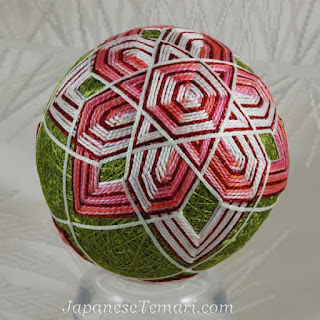I've got an email list going just for people interested in stitching temari with us in North Carolina. Please let me know if you want to join. Here is what I sent out today...
Hi temari stitchers,
You've expressed an interest in stitching temari with us in North Carolina and I've created a separate email list just for locals and those who want to come and be a local for a while. This is it. Thanks so much for joining the list!
Here's what's on the schedule as of today:
Three sessions (July, August, and September). Click on the link above to get the details. If you are beginner, start with Dana to learn the basics and lots of fun temari designs.
Sign up for this class through Thimble Pleasures.
Raleigh, NC, at Barb's home
Saturdays, from 9:30 am until noon or so. June 23, July 21, August 18, September 15. This class is for experienced temari makers who are at the level where they are comfortable making a C8 division. If you're not there yet, let me know and I'll hook you up with Dana for the beginning classes. Each session is $15 payable to Barb. Bring your own stitching supplies. The deadline to sign up is Wednesday, midnight, before the Saturday class. Minimum is three students. Maximum is twelve students.
Sign up for each Saturday class individually by contacting Barb (barb@japanesetemari.com). Please sign up as soon as you know you will come since seating is very limited.
Saturday, June 23 - Let's play with asanoha (flax or hemp leaf) design. Bring a ball (any color, any size) marked in a C8. Bring extra thread (same color as marking thread) for stitching the design. This technique is described on pages 144-149 in Temari Techniques. Bring balls marked in other divisions if you want to keep going and be sure to bring your requests for future classes.
Temari Retreat in Raleigh, NC
Almost 40 people have expressed an interest in coming to stitch temari over a two or three day period. Wow! I'm so excited! I'm hoping to get this event organized for October, 2012, and will let you know which days as soon as I can.
Thanks again for your interest in coming to stitch with us!


